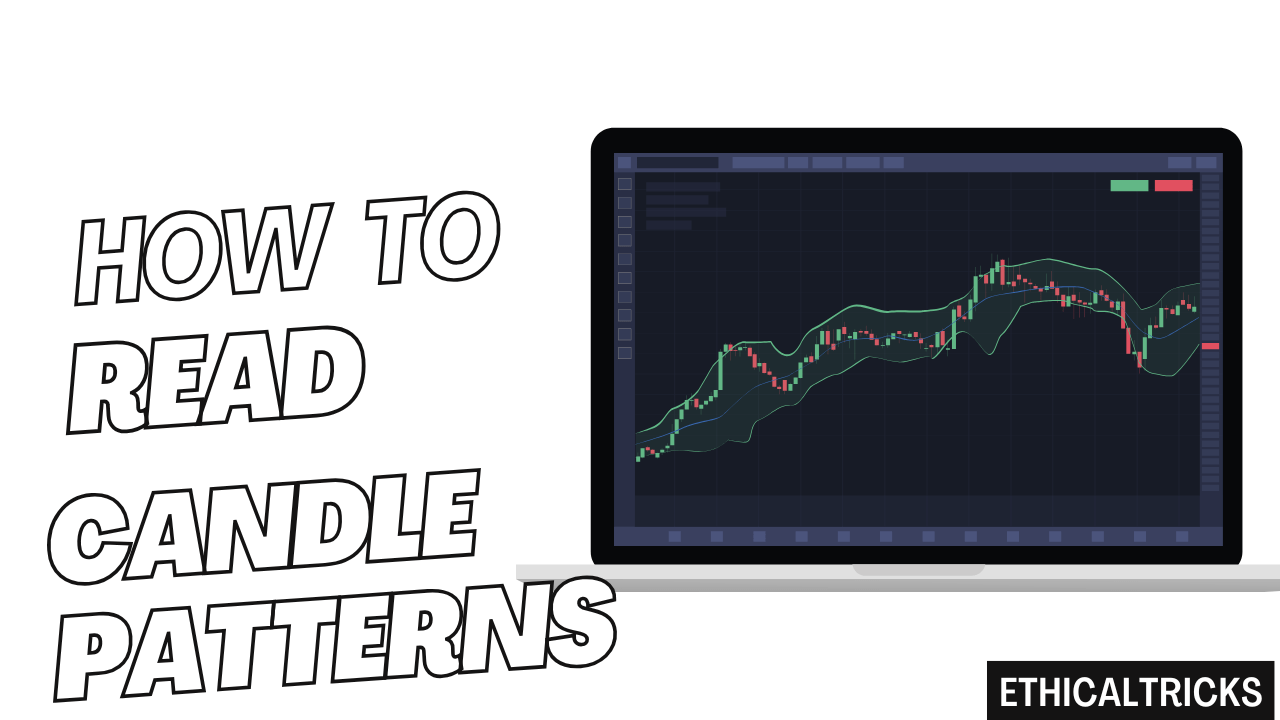Introduction
Candlestick charts are essential tools for traders, offering insights into price movements and market sentiment. By understanding how to read these charts, traders can make better-informed decisions and improve their strategies. This complete guide will introduce you to the fundamentals of reading candlestick charts, key patterns to look out for, and tips for interpreting price movements.
What Are Candlestick Charts?
Candlestick charts visually represent price movements over a specific period. Each “candlestick” on the chart shows the opening, closing, high, and low prices within that timeframe, providing traders with a deeper look into market behavior.
- Key Components:
- Body: Shows the difference between the opening and closing prices.
- Wicks (or Shadows): Indicate the highest and lowest prices during the period.
- Color: Often, a green (or white) candle shows a price increase, while a red (or black) candle indicates a price decrease.

Why Use Candlestick Charts?
Candlestick charts provide a clearer picture of price action and are widely used by traders for their simplicity and detail. By examining these charts, traders can spot trends, potential reversals, and decide on the best entry or exit points.
Key Candlestick Patterns Every Trader Should Know
Understanding common candlestick patterns is crucial for traders. Here are some fundamental patterns to help you get started:
1. The Doji
A Doji forms when the opening and closing prices are nearly identical, resulting in a small or nonexistent body. This pattern suggests indecision in the market and often signals a potential reversal.
- Example: If a Doji appears at the end of an uptrend, it may signal a trend reversal.
- Tip: Look for confirmation with the next candlestick before making a trade.
2. Hammer and Hanging Man
The Hammer and Hanging Man look similar but appear in different contexts. Both have small bodies with long lower shadows.
- Hammer: Appears after a downtrend and signals a potential bullish reversal.
- Hanging Man: Occurs at the end of an uptrend, signaling a potential bearish reversal.
3. Engulfing Patterns
Engulfing patterns occur when a smaller candlestick is “engulfed” by a larger one, signaling a strong shift in momentum.
- Bullish Engulfing: Appears in a downtrend when a large green candle completely engulfs the prior red candle.
- Bearish Engulfing: Shows up in an uptrend when a large red candle engulfs the previous green candle.
4. Morning and Evening Stars
These three-candlestick patterns often indicate trend reversals.
- Morning Star: Consists of a long red candle, a small-bodied candle, and a long green candle, signaling a bullish reversal.
- Evening Star: Features a long green candle, a small-bodied candle, and a long red candle, indicating a bearish reversal.
How to Read Candlestick Charts Effectively
Reading candlestick charts goes beyond memorizing patterns. Here are practical tips to improve your chart-reading skills:
1. Combine Candlestick Patterns with Volume Indicators
Volume plays a vital role in confirming candlestick patterns. When you see a pattern, check if the volume supports the trend direction.
- Example: If you spot a bullish engulfing pattern on high volume, it strengthens the signal for a potential uptrend.
2. Identify Trends with Multiple Candlesticks
Single candlesticks can be misleading. Use multiple candlesticks to confirm trends and gain a fuller picture.
- Tip: Analyze three or more candlesticks together to understand the momentum and potential reversals.
3. Set Entry and Exit Points Using Candlestick Patterns
Candlestick patterns can help determine the best times to enter and exit trades. For instance, use a bullish pattern for entry in a rising market and a bearish pattern to exit.
4. Stay Updated with News and Events
Market news and events can influence candlestick patterns and lead to unexpected price movements. Always consider current news alongside chart analysis.
- Tip: Check financial news daily to keep up with potential market-shifting events.
Common Mistakes to Avoid When Reading Candlestick Charts
For beginners, avoiding common mistakes can enhance success in trading. Here are a few things to keep in mind:
- Over-reliance on Patterns: Don’t rely solely on patterns for decision-making. Use additional indicators to confirm patterns.
- Ignoring Market Context: Always consider the market context (uptrend, downtrend, consolidation) when analyzing patterns.
- Not Managing Risk: Even with patterns, trades can go wrong. Always use stop-loss orders to manage risks.
Conclusion
Learning how to read candlestick charts empowers traders to interpret price movements and spot trading opportunities. By understanding patterns, analyzing trends, and considering volume, you can make more informed trading decisions. Start practicing these insights to sharpen your skills, and over time, candlestick chart analysis will become an essential part of your trading strategy.

